Haworthias are low-maintenance succulents native to southern Africa. They need minimum attention because they need very little water and indirect sunlight.
A common thought that comes to everyone’s mind is how fast do haworthia grows. Let’s find out.
Haworthias are slow-growing succulents that take over 5-7 years to mature. The average growth rate is 0.5-1.5 inches every year. They will grow a little quicker when they are young, and the growth rate slows down as they mature. Repot them in fresh soil every 2-3 years to keep them thriving.
You can wait for 2 to 3 years for re-potting. They even grow pups after several years after they mature. So, you don’t need to give them much attention until they are mature enough.
Today, in this article, we will discuss the average growth rate of Haworthias, how much time they take to mature, root after recent propagation, and produce pups. We will also include some tips to make them grow a little faster.
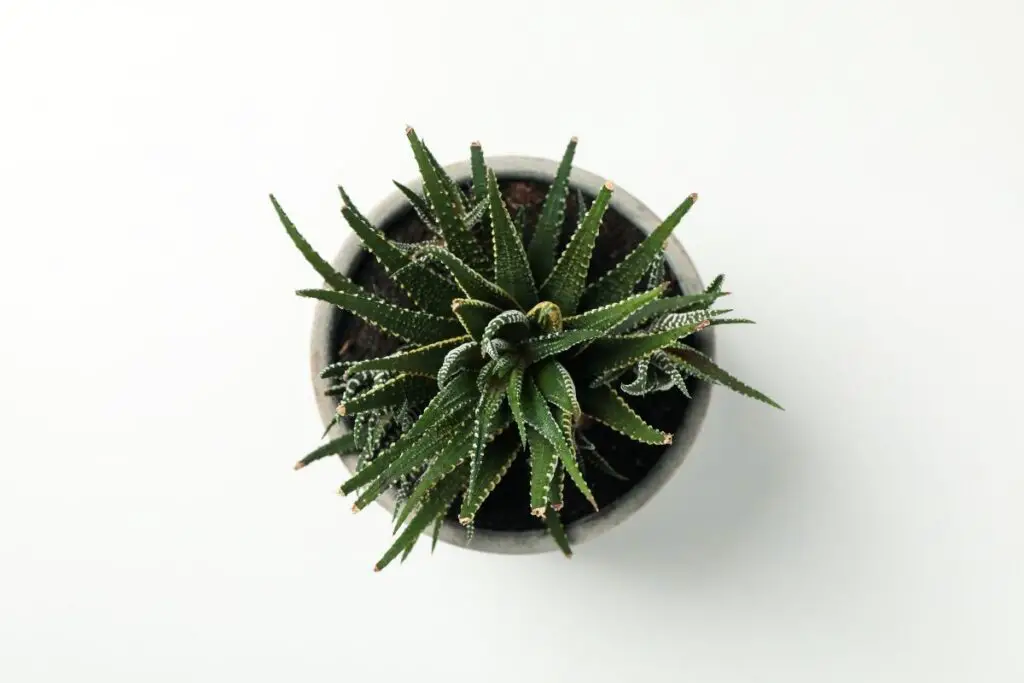
How fast and big do Haworthias grow?
Haworthias grow slower than the other succulents, so they are listed in the slow-growing succulents.
They will grow only 3-4 inches longer within 4-5 years.
Generally, Haworthias grow about 3-5 inches in height and width.
Some varieties can even grow around 20 inches in height. They won’t grow much taller.
Once the plant matures, it can grow enough pups in one single year.
Haworthias will generally slow down their growth during the hottest days of the summer.
They are winter growers and stay dormant in the summers.
Since they are slow growers, they will take a lot of time to come out of their dormancy during the fall months.
Again, they will grow slowly when the winters are very cold.
However, you can slightly increase Haworthia’s growth if you maintain their requirements properly so that their growth and development are not interrupted by any issues.
How fast do propagated Haworthias take to root and grow?
There are different ways to propagate Haworthias – seeds, leaf-cutting, and offsets.
When you propagate Haworthias from offsets, you don’t have to wait for their root growth.
They grow roots at the beginning.
By the time you divide these offsets for propagation, the little pups will already have their roots grown.
You must remove the offsets only when they have roots.
Without root growth, the plant won’t survive healthily.
For getting offsets, you have to wait for several years.
Note that all varieties of Haworthia don’t produce pups. Some of them produce rare or no offsets.
While propagating Haworthia with leaf cuttings, the leaves will take at least 2 to 5 weeks to develop roots.
The plant will take at least 6 weeks to grow seedlings from seeds.
How fast does Haworthia grow flowering stem?
Haworthias flower from a stem which is called an inflorescence.
If the plant has been in good health until its maturity, it will grow this flowering stem.
Don’t worry, as Haworthias won’t die after flowering, unlike some other succulents.
Within one week, the flowering stem can grow a few inches tall. Let’s assume 5 to 6 inches.
They will grow very tall within one month and even produce multiple flower buds in clusters.
Also read: Does Haworthia Bloom? (How, When)
Looking for gardening supplies? We have tested 100's of products before recommending them to you guys. Check out our best pick below:
| Image | Gardening Supplies | Best Price? |
|---|---|---|
 Top
Top Top
Top | Raised Garden Bed Kit | Check On Amazon |
 | XLUX Soil Moisture Meter, Plant Water Monitor, Soil Hygrometer Sensor for Gardening, Farming, Indoor and Outdoor Plants, No Batteries Required | No Results |
 Top
Top Top
Top | 82 Pcs Garden Tools Set and Extra Succulent Tools Set | Check On Amazon |
 | Joeys Garden Expandable Garden Hose with 8 Function Hose Nozzle, Lightweight Anti-Kink Flexible Garden Hoses, Extra Strength Fabric with Double Latex Core, (50 FT, Black) | No Results |
 Top
Top Top
Top | Dual Chamber Compost Tumbler | Check On Amazon |
 Top
Top Top
Top | Sunnyglade Plant Stakes | Check On Amazon |
 Top
Top Top
Top | Organic Cold Pressed Neem Seed Oil | Check On Amazon |
 Top
Top Top
Top | Mighty Mint Gallon :-Insect and Pest Control Peppermint Oil | Check On Amazon |
 Top
Top Top
Top | Scotts DiseaseEx Lawn Fungicide | Check On Amazon |
 Top
Top Top
Top | Jacks Classic 20-20-20 All Purpose Fertilizer | Check On Amazon |
 Top
Top Top
Top | 30,000 Seeds Pollinator Attracting Wildflower Mixture | Check On Amazon |
 Top
Top Top
Top | Survival Vegetable Seeds Garden Kit-Over 16,000 Seeds | Check On Amazon |
Factors determining the growth rate of Haworthias
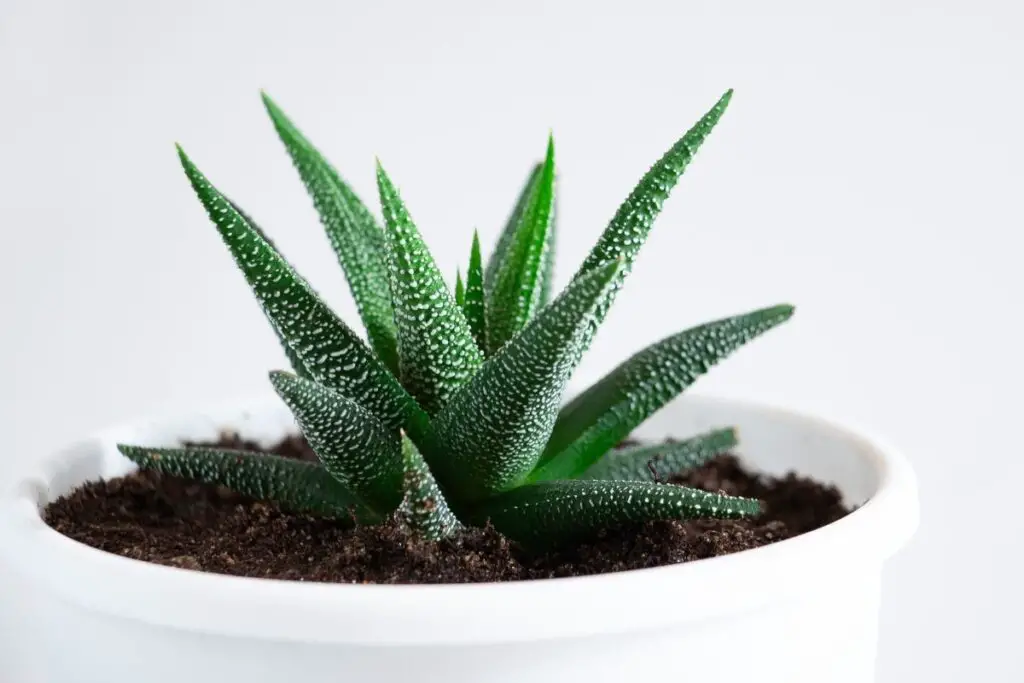
As Haworthias are generally slow-growing succulents, it might be quite impatient to wait for them to become mature.
It will be growing slower if they suddenly face some problems.
The problems intervene in the plant’s smooth development and make the plant grow too slow.
Below, I have shared some care tips that help keep the plant healthy and boost the plant’s growth to some extent.
Haworthias will like a little crowd, but it shouldn’t be too much
All the succulents like to be slightly crowded.
The plant’s roots will still be able to absorb nutrients and water from the soil in such crowded places.
But ensure that they are not too crowded.
The plant is already a slow grower. If they are crowded on top of that, it will cause slow growth.
Every individual plant will focus on its root energy to maintain its nutrition and hydration.
The roots will be fighting for them.
As a result, Haworthia will not get enough energy to progress its upper portions.
You can plant multiple succulents together with Haworthias, but don’t forget to keep some inches of space between them.
Moreover, Haworthias will require space to produce pups at the root portion.
So be wise and keep space of at least 3 to 4 inches.
Also read: Do Haworthia Like To Be Root Bound? (+When & How To Repot)
Good soil quality can boost their growth
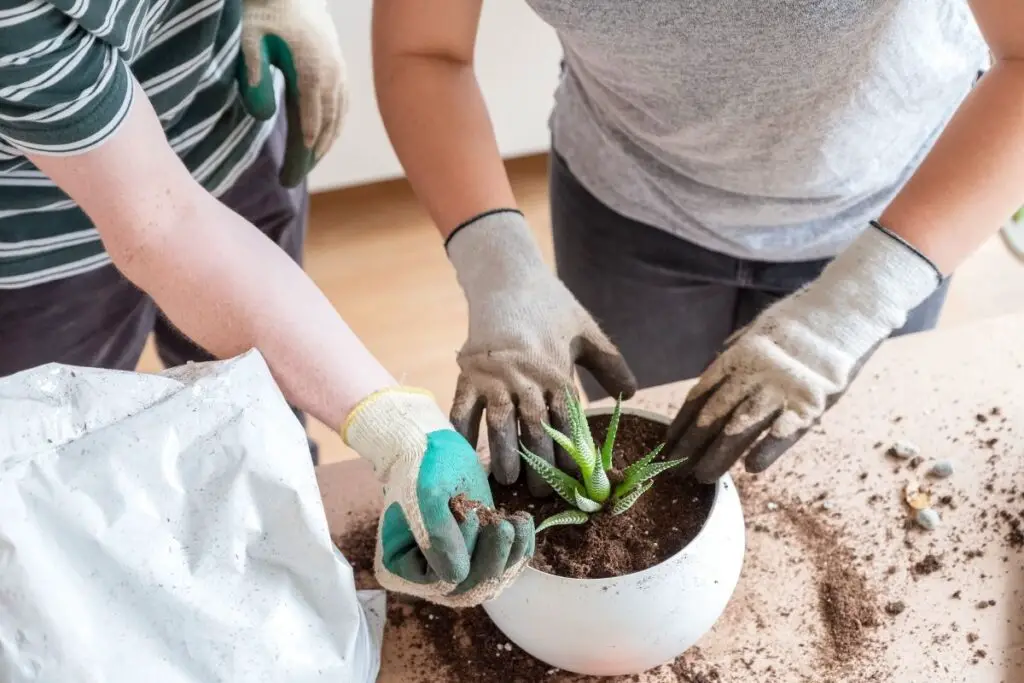
When we speak of ideal soil mix for succulents, it is always about drainage.
A fast-draining soil will encourage undisturbed growth in the plant.
An undisturbed growth will help the plant to grow at an adequate rate.
Using well-drained soil with some good ingredients will keep them healthy.
Well-drained soil will stop the plant from suffering overwatering and root rot.
The roots will also fail to breathe when the soil doesn’t drain excess water due to suffocation.
It can affect the plant’s growth and slow them down.
But with well-drained soil, the plant’s growth rate will be better.
Some ideal soil mixes that can improve drainage and boost the plant’s growth are:
Recipe 1
Recipe 2
Equal parts of:
- 60% Coarse sand
- 40% Potting soil.
Recipe 3
- 50% gravel of appropriate size
- 50% of soil, coarse sand, and organic fertilizer
Recipe 4
- 80% pumice
- 20% coir, 1-3 mm approx.
Recipe 5
- 40% parts potting soil
- 40% parts small gravel
- 20% part perlite or pumice
Also read: What Soil To Use For Haworthia? (+Ideal Soil Mix)
Repotting
Giving the plant new soil timely can give the plant some nutrients, which can help increase the plant’s growth rate to some extent.
It will rejuvenate the plant’s growing medium and promote a good growing speed.
That is why repotting the soil every 2-3 years will replenish the soil and restock the nutrients needed by the plant.
Haworthias grow pups at the root portion.
When you see the little pups peeping out of the soil surface, repot them to a bigger pot.
This will give the plant more place to grow pups, and the pups can grow freely without any crowd or suffocation.
Altogether, the plant will start growing adequately again.
If your Haworthias are in the ground, you cannot repot them.
But you can replace the topsoil to give them good nutrients.
Also read: Do Haworthia Like To Be Root Bound? (+When & How To Repot)
Fertilizing can increase the growth rate
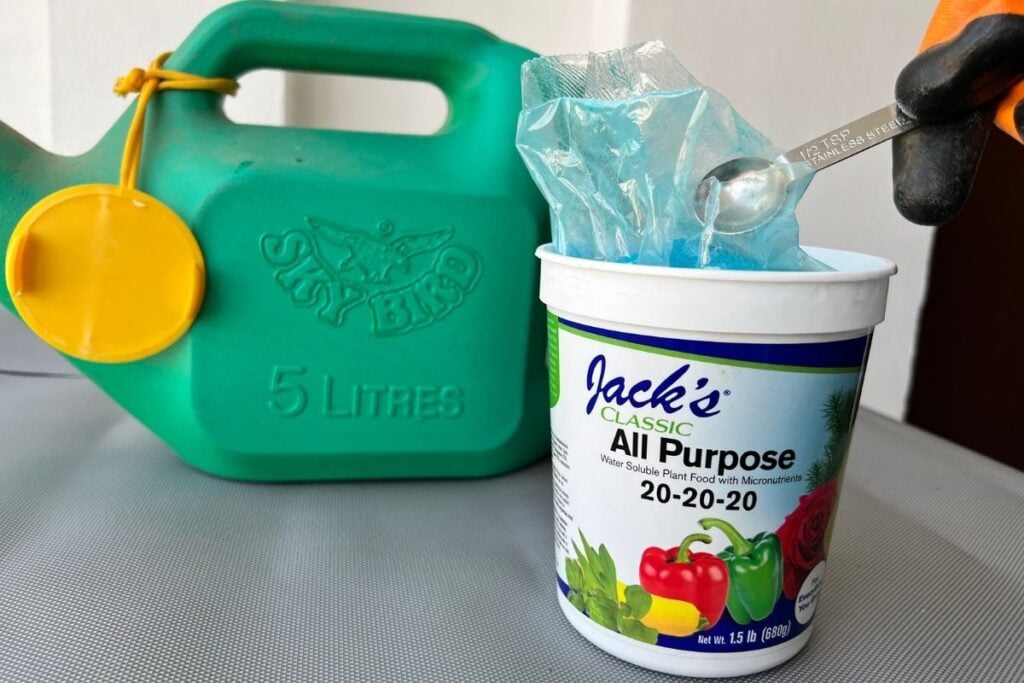
Soil alone won’t be able to give the plant all the nutrients.
You need to give them fertilizers.
Fertilizing once in the spring and fall can help them grow vigorously during their growing season.
Moreover, when the plant goes dormant in the summers and comes out of dormancy in the fall, fertilizing can encourage the plant to come out of dormancy a little faster.
Similarly, when the plant slows down its growth in the winters, fertilizing in the early spring also increases its growth.
As spring is their growing season, fertilizing will increase their growth.
Also read: How To Fertilize Haworthia? (Best Fertilizer+When To Use)
Spread the roots from time to time
The roots might get entangled or start growing in circles for adequate growth and using the most from the soil.
This sometimes happens when the plant gets root bound in a container.
In-ground plants are quite free from such entanglements.
As many gardeners grow Haworthias in containers, you must spread the roots from time to time so that they don’t turn too compact.
Though the chances of root growth in such circular motion are quite less for in-ground plants, you must check it once.
If any root is stubborn, don’t detangle it forcefully. It may break or hurt the roots. Let them be.
Separate the pups from time to time
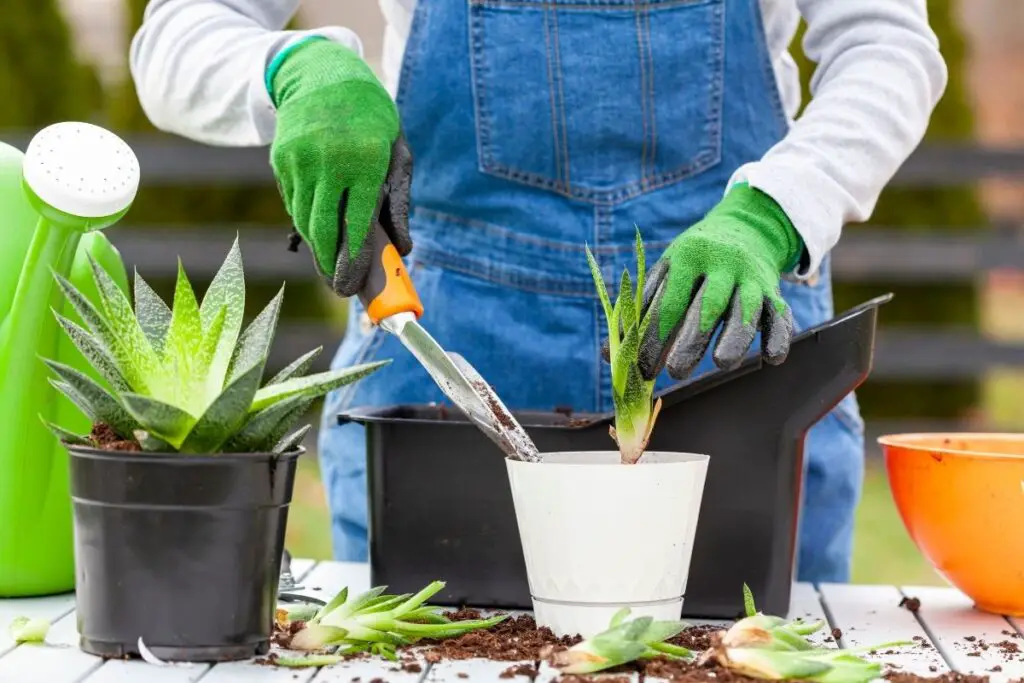
Once the Haworthias mature, they produce some pups at the root portion.
Some succulents produce pups at the soil surface.
At such moments, frequent transplantation or removal of offsets is not required.
But, for Haworthia, since it is in the root portion, you must separate them so that the root can grow easily, breathe well and function well to help the plant grow at a good pace.
If you don’t remove the pups, the plant will get too crowded.
And if you are reading this point, you must have already read the overcrowding point where I explained the result of overcrowding.
So, don’t forget to separate the pups.
As the Haworthias will produce offsets at the root portion, checking is impossible.
The moment the pups come out of the soil surface, remove them and transplant them.
Be more cautious about separation when you grow Haworthias in containers.
In the ground, the plant will have unlimited areas to grow roots.
But such space is unavailable in the pots.
Don’t let the plant experience any difficulty
Overwatering, sunburn, lack of nutrients, pest and fungus infestation, and rotting are problems that all the plants will face at one moment.
You will find certain signs like yellowing, browning, whiteness, redness, drooping, wilting, or blackening; just know that these are signs of stress.
Whenever you find any of these, you must identify the real cause behind them and treat the problem.
These stresses can slow down the plant’s growth more.
If you don’t want them to grow slowly, keep these points in mind.
Prevent physical damages to the plant.
It will be hard to kill the plant if you do everything right.
Haworthias will grow at their own pace or rather a little faster with the ideal conditions.
But if they face any physical damage, it would again slow down their growth.
Sometimes, the plant will stop growing completely.
However, it depends on the damage level.
Haworthias are naturally stemless plants, but they grow one stem from which a flower emerges.
The stem may seem strong, but it is not strong enough.
The slightest damage could affect their growth.
Similarly, little damage to their leaves will affect their growth.
It occurs when you deal with the plant roughly, or your pets or children are responsible for it.
It will take months to heal.
Be very gentle while dealing with the plant.
Take your time, and do whatever is required.
Keep the plant away from the reach of your pets or children.
For outdoor plants, create a barrier and also spray some deterrents.
Also, make sure to protect your plants if your region receives strong winds.
You need to be more careful if your Haworthias are outside in the ground, especially if they are in an open space.
It is better to plant Haworthias near some tall trees (not too close, though), protecting Haworthias from such strong winds.
Moreover, open areas can give them air currents, affecting their growth and health.
Final thoughts
Though Haworthias are slow growers, taking care of their health, especially the factors I explained, will help them grow a little faster. If not faster, the care tips will prevent delayed growth.
Constant stress could be the result of their extremely slow growth. In the hottest summer days and coldest winter days, the plant will grow slower than at its normal pace. It is normal.
Fertilize them slightly to help them come out of their dormancy faster and grow busily when these seasons get over. Fertilize only during the beginning of spring and fall.
Reference: The Haworthia Society, Botanical Studies, University of Wisconsin-Madison, Sciencedirect, Researchgate, Haworthia Study.
